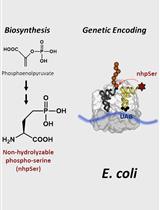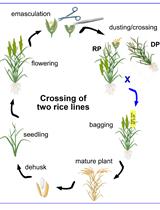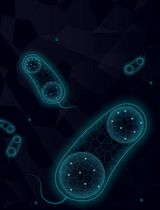- EN - English
- CN - 中文
Mobilization of Plasmids from Bacteria into Diatoms by Conjugation Technique
通过共轭技术将质粒从细菌转移到硅藻中
发布: 2024年03月05日第14卷第5期 DOI: 10.21769/BioProtoc.4945 浏览次数: 1756
评审: Noelia ForesiEmilia KrypotouIsmail Tahmaz
Abstract
Diatoms serve as a source for a variety of compounds with particularbiotechnological interest. Therefore, redirecting the flow to a specific pathwayrequires the elucidation of the gene’s specific function. The mostcommonly used method in diatoms is biolistic transformation, which is a veryexpensive and time-consuming method. The use of episomes that are maintained asclosed circles at a copy number equivalent to native chromosomes has become auseful genetic system for protein expression that avoids multiple insertions,position-specific effects on expression, and potential knockout of non-targetedgenes. These episomes can be introduced from bacteria into diatoms viaconjugation. Here, we describe a detailed protocol for gene expression thatincludes 1) the gateway cloning strategy and 2) the conjugation protocol for themobilization of plasmids from bacteria to diatoms.
Keywords: Conjugation (共轭)Background
Diatoms are unicellular, predominantly photosynthetic, free-living microorganisms that play a central role in trophic webs as primary producers [1]. Diatoms represent the most abundant group within the phytoplankton community, contributing to 40% of global CO2 fixation in the oceans. These organisms are found in freshwater bodies, making them one of the most ecologically successful microalgae worldwide [2,3]. One physiological aspect that explains its ecological success is the energetic-metabolic coupling between mitochondria and chloroplasts [4,5].
From a biotechnological point of view, these organisms produce a variety of compounds of interest such as silica frustule, used as filtering and abrasive materials, and terpenes like fucoxanthin, lupeol, and betulin with antitumoral and antioxidant properties [6]. Furthermore, these organisms are a source of traditional biofuels including methane, through the anaerobic digestion of algae biomass, and biodiesel derived from oil. These organisms show an interesting lipid profile, rich in very long– chain polyunsaturated fatty acids (ω-3 and ω-6), which are of great interest to the industry, especially because they are not usual in other organisms like chlorophytes and flowering plants [7].
The advancement of genetic tools and increasing knowledge on metabolic pathways have facilitated the development of strategies to enhance the productivity of diatoms byredirecting the metabolic flow towards desired products [8]. Thus, diatom genetic manipulation is essential for the elucidation of specific gene functions. Biolistic transformation methods are standard for many diatom species; however, they are time-consuming and require high-yield plasmid DNA preparations and access to expensive specific equipment and reagents (e.g., gene gun). On the other hand, episodes provide a reliable, consistent, and predictable platform for protein expression by avoiding the complications of random chromosomal integration including multiple insertions, position-specific effects on expression, and potential knockout of non-targeted genes. They can be efficiently transferred from bacteria into the diatom via the conjugation method developed by Karas et al. [9] and improved by Diner et al. [10]. Here, we thoroughly describe the procedure previously published [11] and frequently employed in our lab for cloning genes of interest and the subsequent mobilization of vector constructions from bacteria into diatoms by conjugation.
Materials and reagents
Biological materials
Pipette tips: 1–2 µL, 2–200 μL, and 100–1,000 μL (Deltalab, catalog number: 200070 and 301-09)
90 mm diameter Petri dishes (Deltalab, catalog number: 200209)
1.5 mL microcentrifuge tubes (Deltalab, catalog number: 200400P)
50 mL conical centrifuge tubes (Deltalab, catalog number: 42993)
0.22 μm nylon membrane filters (e.g., GVS, catalog number: FJ13BNPNY002AD01)
Reagents
Phaeodactylum tricornutum liquid cultures [e.g., Culture collection of algae, University of Texas, Austin (Utex), catalog number: 646]
PCR kit
dNTPs (Promega, catalog number: U123A)
Platinum Pfx (Invitrogen, catalog number: 11708-013)
10× Pfx amplification buffer (Invitrogen, catalog number: 52806)
MgCl2 25 mM (Promega, catalog number: A351H)
Taq Pegasus (Productos Bio-Logicos, catalog number: EA01M)
GoTaq green buffer 5× (Promega, catalog number: M791A)
Destination plasmid pFcpB (Addgene, catalog number: 90098)
pTA-Mob (Addgene, catalog number: 149662)
Escherichia coli DH10B (Thermo Fisher, catalog number: Eco 113)
E. coli pTA-Mob liquid cultures (homemade)
pENTR/D-TOPO Vector kits (Thermo Fisher Scientific, catalog number: K240020SP)
LR Clonase Enzyme mix (Thermo Fisher Scientific, catalog number: 11791019)
Agar medium 2% (Britannia, catalog number: B0101406)
Luria Broth (LB) medium (homemade)
Gentamicin (Gn) stock solution 25 mg/mL (1:1,000) (Merck, catalog number: G3632)
Kanamycin (Kn) stock solution 50 mg/mL (1:1,000) (Merck, catalog number: BP861)
Ampicillin (Amp) stock solution 100 mg/mL (1:1,000) (Merck, catalog number: A9518)
Zeocin (Zeo) stock commercial solution (Invitrogen, catalog number: R25001); use a concentration of 7.5 µL commercial solution stock in 10 mL of BG11 medium
Amphotericin (Amph) stock solution B 2.5 mg/ mL (1:1,000) (Richet S.A laboratory, https://www.richet.com.ar/en/list?t=n&i=13); use a concentration of 2.5 µg/ mL
BG11 medium (homemade)
Selection plate (0.5× BG11, 1% agar + antibiotics (Amp + Kn + Amph + Gn + Zeo)
Conjugation plate (0.5× BG11 + 0.9% agar + 5% LB + antibiotics (Amp + Amph + Gn)
Tryptone (BD, catalog number: 211705)
Yeast extract (Oxoid, catalog number: LP0021)
NaCl (J.T. Baker, catalog number: 3624-19)
Na2Mg EDTA (Sigma-Aldrich, catalog number: 14402-88-1)
Ferric citrate (Merck, catalog number: 3522-50-7)
CaCl2·2H2O (Merck, catalog number: 10035-04-8)
MgSO4·7H2O (Cicarelli, catalog number: 1054214)
K2HPO4 (Cicarelli, catalog number: 1015214)
H3BO3 (Cicarelli, catalog number: 771214)
MnCl2·4H2O (Merck, catalog number: 13446-34-9)
ZnSO4·7H2O (Merck, catalog number: 7446-20-0)
CuSO4·5H2O (Merck, catalog number: 1.02790.1000.1026)
CoCl2·6H2O (Merck, catalog number, 7791-13-1)
Na2MoO4·2H2O (Merck, catalog number: 10102-40-6)
NaCO3 (Merck, catalog number: 497-19-8)
NaNO3 (Merck, catalog number: 7631-99-4)
Solutions
LB medium (1 L)
BG11 medium (1 L):
Stock I (1 L)
Stock II (1 L)
Stock III (1 L)
Stock V - microelements (1 L)
Carbonate supplement (50 mL)
Nitrate supplement (50 mL)
Recipes
LB medium (1 L)
10 g of tryptone
5 g of yeast extract
10 g of NaCl
1 L of dH2O
BG11 medium (1 L)
Stock I (1 L):
0.1 g of Na2Mg EDTA
0.553 g of ferric citrate
3.6 g of CaCl2·2H2O
Filter sterilize into a sterile bottle or autoclave.
Stock II (1 L):
7.5 g of MgSO4·7H2O
Filter sterilize into a sterile bottle or autoclave.
Stock III (1 L):
3.05 g of K2HPO4
Filter sterilize into a sterile bottle or autoclave.
Stock V - microelements (1 L):
2.86 g of H3BO3
1.81 g of MnCl2·4H2O
0.222 g of ZnSO4·7H2O
0.074 g of CuSO4·5H2O
0.05 g of CoCl2·6H2O
0.4451 g of Na2MoO4·2H2O
Filter sterilize into a sterile bottle or autoclave.
Carbonate supplement (50 mL)
1 g of NaCO3
Filter sterilize into a sterile bottle.
Nitrate supplement (50 mL)
15 g of NaNO3
Filter sterilize into a sterile bottle.
For basic BG11 (1 L), combine the following stock solutions:
Add 10 mL of stock I, II, and III.
Add 1 mL of stock V and carbonate supplement.
Add 5 mL of nitrate supplement.
Add sterilized dH2O to complete to 1 L.
Equipment
Pipettes
Neubauer counting chamber
Laminar air flow equipment
Centrifuge with 50 mL tube capacity
Erlenmeyer
Room or chamber at 37 ºC
Room or chamber at 18 ºC with light 100-200 PAR
Shaker (Vicking, model: Shaker Pro)
Spectrophotometer (Gene Quant, model: 1300)
Binocular light microscope
Applied Biosystems Veriti Thermocycler
Procedure
文章信息
版权信息
© 2024 CONICET: Consejo Nacional de Investigaciones Científicas y Técnicas; This is an open access article under the CC BY-NC license (https://creativecommons.org/licenses/by-nc/4.0/).
如何引用
Berdun, F., Valiñas, M., Pagnussat, G. C. and Zabaleta, E. J. (2024). Mobilization of Plasmids from Bacteria into Diatoms by Conjugation Technique. Bio-protocol 14(5): e4945. DOI: 10.21769/BioProtoc.4945.
分类
微生物学 > 异源表达系统
生物工程 > 合成生物学
分子生物学 > DNA > 接合
您对这篇实验方法有问题吗?
在此处发布您的问题,我们将邀请本文作者来回答。同时,我们会将您的问题发布到Bio-protocol Exchange,以便寻求社区成员的帮助。
提问指南
+ 问题描述
写下详细的问题描述,包括所有有助于他人回答您问题的信息(例如实验过程、条件和相关图像等)。
Share
Bluesky
X
Copy link













